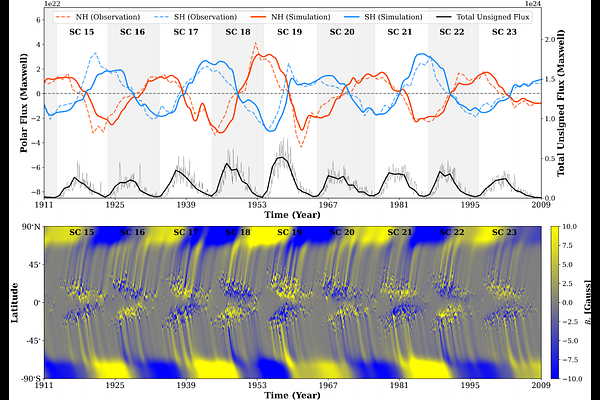Extreme Fluctuations in the Sun's Activity over the Modern Maximum: Understanding the Enigmatic Solar Cycles 19-20

Extreme Fluctuations in the Sun's Activity over the Modern Maximum: Understanding the Enigmatic Solar Cycles 19-20
Shaonwita Pal, Dibyendu Nandy
AbstractOver the past century, the Sun's activity -- which exhibits significant variations -- went through a phase known as the Modern Maximum. Notably, the strongest sunspot cycle on record during this period, and indeed since direct sunspot observations began, was cycle 19; this was followed by a significantly weaker cycle 20. Understanding and reconstructing this extreme variability has remained elusive. Utilizing data-driven, coupled models of magnetic field evolution on the Sun's surface and within its convection zone, here we show that random deviations in the tilt angle and polarity orientation of bipolar sunspot pairs is sufficient to explain these observed, extreme fluctuations during the modern maximum in solar activity. Our results support the theory that perturbation in the poloidal field source of the dynamo mechanism -- mediated via the emergence of anomalously tilted solar active regions - is the primary driver of extreme variations in the Sun's activity. This study has implications for understanding how the Sun may switch from a phase of extreme activity to quiescent, low activity phases -- such as the Maunder Minimum.